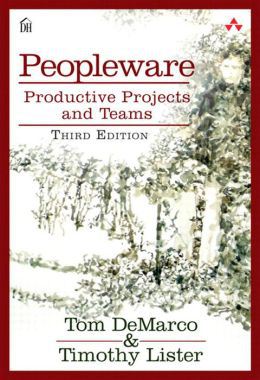Last week I finished reading the ZeroMQ book. I was expecting the usual drill:
talk about why technology is awesome, introduce API of technology, show
basic examples of technology, and show advanced examples of technology.
The ZeroMQ book does cover all the usual subjects, but it really impressed because it went way beyond that standard expectation. I finished the book and was very satisfied for two reasons:
- The ZeroMQ technology is truly awesome. It does amazing things.
- The author, Peter Hintjens, describes advanced ways of thinking about software development.
I’m not joking about how cool ZeroMQ is. Essentially, ZeroMQ is a really slick way to communicate over networks. The tool seamlessly manages internal message queues so that users are given a simple socket-like API to send and receive data. ZeroMQ also has bindings in tons of languages. In fact, the online book let’s you choose the language of the examples. My choice was Python. Learning in the language of your choice is a really fascinating way to get introduced to a tool. I didn’t have to read examples in a language I’m less comfortable in and that greatly increased the rate of my understanding.
Hintjens also discussed some atypical topics. One of those topics was code generation. My view of code generation was simple: it’s nasty. The author showed how to use code generation in an elegant way, yet he was quick to point out that much code generation is nasty stuff. But when applied carefully, code generation can replicate very tricky parts of code flawlessly and accurately describe what you’re trying to model. He gave an excellent example of creating a functional state machine from a simple XML state model. The XML was cranked through a code generator called GSL, and a beautiful source file came out on the other side. I was very impressed since I’m used to seeing complete garbagefrom average code generators.
The other surprising development topic that was covered was protocols. This topic makes a lot of sense for a networking tool, but I did not expect the depth of coverage. Hintjens gives an overview of Augmented Backus-Naur Form (ABNF) as a way to describe protocols. He explains the rationale for using ABNF and the scenarios to use it. This would be extremely dry, yet he does it with humor by using lolcats terminology to detail his protocols (e.g., commands such as OHAI, SRSLY, and KTHXBAI). It’s an odd way to learn formal protocol specifications, but it worked for me.
When I finished this book, I had many interesting things to think about. I still don’t know the best times to use all these techniques, but seeing very robust solutions to complicated problems grew my design thinking. My hope is that I’ll be able to use some of these patterns to write better code in the future. ZeroMQ was a good book for learning about a neat technology, but it may be even more valuable for shaping how developers can approach problems.


